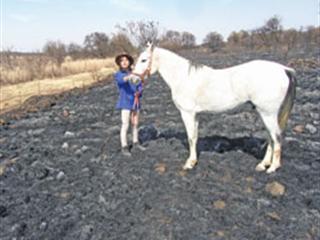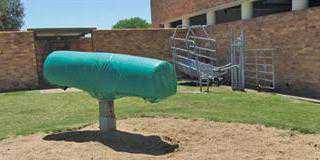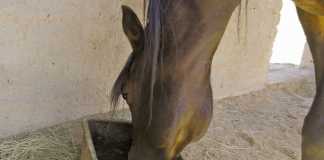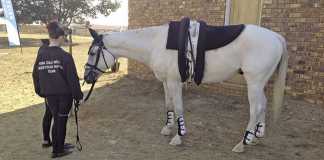
It’s the fire season in the summer rainfall areas of the country. The heat of veld fires will melt barbed wire fences. As a fire begins to catch in the long grass, hot air rises, pulling in cold air behind it and generating its own wind. Whirlwinds are often also generated by the flames and lift burning ash upwards, dropping it ahead of the flames to start new fires. Horses panic when they smell smoke or see flames. They’ll run ahead of the fire, straight into fences, where they can easily become trapped and suffer fatal burns.
Even if the horses are saved, you may land up without grazing – and buying in feed can be difficult in the dry season, as well as extremely expensive. At the beginning of this winter the media graphically described how a barn full of horses burnt down in the Free State. Stables are full of dry hay and sawdust bedding and will burn easily. Hay should not be stored in a loft, but in a separate barn or metal container.
Stables that open directly to the outside instead of a central passage are much safer in the case of fire. You should also have an area of at least 20m, preferably 30m, cleared or paved around the stables, so a veld fire can’t get close. A sandy dressage arena or a road between the stables and any large expanse of veld is also a good idea. On a horse farm, you need to own a tractor-drawn water-cart or a 1 000l tank with a pump you can shift rapidly on to the back of your bakkie. You can also use it when making firebreaks or to hose down the barn in an emergency.
Firebreaks
Firebreaks are essential and should be a minimum of 6m wide around the property, if your neighbours have firebreaks. On the farm itself, you also need to create firebreaks at the edge of each large grazing area. Fires will jump firebreaks or even a tar road and often you can only stop them by backburning from your own firebreak, against the wind. It’s dangerous to burn firebreaks in the dry season – and a criminal offence if you don’t consult with your neighbours. So you need to burn in April on the Highveld and the beginning of summer in the Cape. During the rest of the dry season you can cut or plough firebreaks.
An emergency
If there’s a local fire committee, make sure you’re a member. Once a fire starts you can get on the radio and muster neighbours with water-carts to help you. All your staff should be made aware of what to do, as a fire can spread across a farm in a matter of minutes. Horses must be brought in immediately. They feel a lot safer in stables and are less likely to injure themselves.
You can turn a group loose in a very small paddock close by if there’s no time to get them into their stables. But it’s better if they’re confined as soon as possible, as they’ll run wildly away from the fire and are almost impossible to catch. They’ll also get in the way of those trying to fight the fire. Usually the herd will follow if you can get a halter on the alpha mare and lead her to a gate and through it.
Side-effects
Even if you manage to stable the horses in time they can be severely affected by smoke inhalation. Symptoms include profuse nasal discharge and difficulty in breathing, with fluid accumulation in the lungs. With a vet’s care, most will recover completely.
Burn wounds can be treated with running cold water in an emergency, but more severe burns require a vet’s assistance.
Despite the expense of buying in food, it’s important to keep horses off burnt veld for at least three weeks after the first rains as the young green shoots contain prussic acid and can cause severe diarrhoea and even fatal colic.
Contact Dr Mac at [email protected]. Please state “Horse talk” in the subject line of your email.













